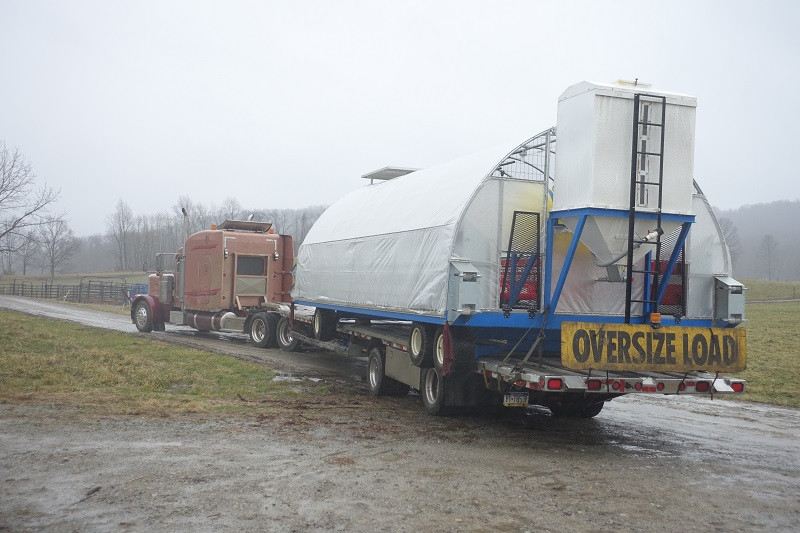Eggmobile
posted on
January 25, 2019

This mobile hen house arrived from Lancaster County, Pa. on Wednesday.
It was 40 degrees and raining as we received this impressively designed piece of equipment, built by Cliff Stoltzfoos. This hen house is designed to accommodate 600 hens, which we expect to fill by summer's end. It supplements the one we built five years ago, which is great, but is limited to 100 hens. We hope this will solve our problem of running out of eggs this winter. It will also allow us to service some wholesale accounts, developing larger scale, which is essential to sustainability.
The only problem we encountered Wednesday afternoon was keeping the 70-foot tractor-trailer on the road and out of the mud, as the driver turned around. Twice several sets of his wheels ended up mired in saturated roadside. Fortunately, the logger's bulldozer was still on site and Landis had enough experience driving it to push and pull this extended vehicle back onto hard surface. The trucker was eventually able to turned himself around and seemed glad to be heading back to Pennsylvania.


This eggmobile is automated so that access to nest boxes can be closed in the evening, keeping eggs clean. Flow of water and grain is powered by a solar panel, and eggs are brought to the collector by a crank and conveyer. Nesting area resides behind red flaps and roosting on the bars above. We are hoping to employ this throughout winter temperatures, but will see. It will need a shade cloth in the summer. This will be moved daily, requiring about 4 acres of land in total.
We have accordingly started brooding 350 baby Golden Comet chicks from Mt. Healthy Hatchery. The brooder is designed to allow the chicks to escape beneath the sides and return underneath to warmer temperatures. Good design, such as this, makes a difference in extreme weather as we are experiencing. They should be laying first eggs by July.


A recent meal of tacos included: pork shoulder, tomato gravy, cilantro, and Cotija Mexican cheese. So darn good it was hard to stop at 3!

We look forward to seeing you on Sunday, with eggs in tow.




